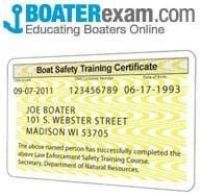Rondout ReservoirNEW YORK |
|
||||
|
|
|
• Surface Area: 2,052 Acres • Volume: 152,216 Acre Feet • Drainage Area: 95 Square Miles • Average Depth: 74 Feet • Maximum Depth: 175 feet • Length: 7 Miles The reservoir was made possible by the construction of Merriman Dam along Rondout Creek. Construction began in 1937 and ended in 1954, three years after the reservoir began delivering water. It would be the first of four built by the city to satisfy its growing demand in the years after World War II. Three villages – Lackawack, Montela and Eureka – were condemned and flooded in the process. The small settlement of Grahamsville remains in existence just west of the reservoir. In 1998, the city's Department of Environmental Protection (DEP) issued an advisory warning against eating more than one reservoir-caught smallmouth bass per month after mercury levels of 1.3 part per million (ppm), slightly above the federal standard of 1.0 ppm, were confirmed in three caught in the reservoir. Since there is no industry in the reservoir's vast watershed, this contamination is believed to be the result of acid rain from coal-fired power plants in the Midwest. Rondout is easy to reach via road as routes 55 and 55A form a loop around it. However, access to the actual reservoir is tightly restricted and has been even more so since the September 11, 2001 attacks forced an increase in security. Fishing is permitted in season with a DEP-issued permit in addition to the appropriate New York state license, and the reservoir is known, as are most Catskill fishing areas, for its trout. However boats are not allowed to leave the reservoir for environmental reasons and must be stored near it year round. Hunters with valid city and state permits may also use the lands around the reservoir where hunting is permitted during the season. Beyond those, however, no recreational use of the reservoir is permitted. While the land is not fenced off, the area is regularly patrolled by uniformed DEP police. |
Nearby Lakes
9 miles
10 miles
16 miles
17 miles
21 miles
26 miles
36 miles
37 miles
|
||||
|
Quick Links Rondout Reservoir News Rondout Reservoir Photos Rondout Reservoir Videos |

 Login
Login






